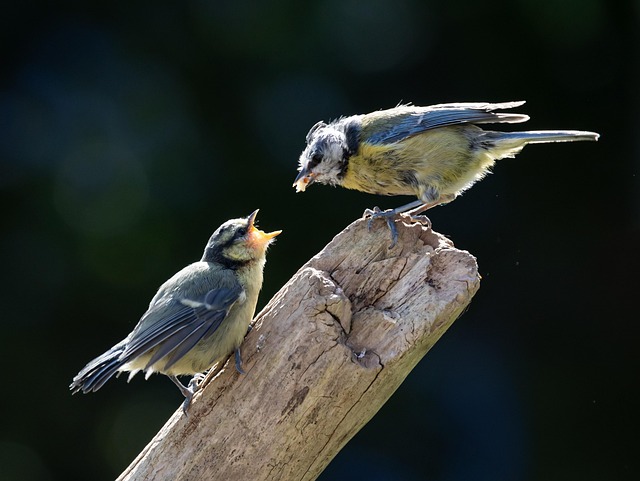How Bird Feeders Help Birds and People Enjoy Nature
Bird feeders are a simple way to watch birds and learn about different types of birds in your area. This article explains how feeders work, the kinds of food birds like, and tips for keeping your feeder full so you can enjoy watching birds visit your yard every day.

Different Types of Bird Feeders for Various Species
Bird feeder designs vary widely, each attracting different species based on their natural feeding habits. Tube feeders with small perches and ports work well for finches, chickadees, and titmice while keeping larger birds away. Platform or tray feeders accommodate ground-feeding species like cardinals, jays, and sparrows. Suet feeders, typically cage-like structures holding high-fat suet cakes, attract woodpeckers, nuthatches, and chickadees, especially during winter months when energy-dense food is crucial. Hummingbird feeders, filled with sugar-water nectar, are specifically designed for these tiny, specialized birds. Understanding which feeder types attract certain species allows bird enthusiasts to create targeted feeding stations for local bird populations.
Benefits of Backyard Bird Feeding for Local Wildlife
Backyard bird feeding provides supplementary nutrition that can be particularly valuable during harsh weather conditions or seasonal food scarcity. During winter months, when natural food sources are covered in snow or depleted, feeders offer reliable sustenance that helps birds maintain their body temperature and energy reserves. In summer, feeders can support birds during nesting season when energy demands are high. Research suggests that consistent feeding can improve birds’ breeding success and winter survival rates in some species. Additionally, well-placed feeders can provide temporary refueling stations for migrating birds, offering critical energy during their long journeys. However, it’s important to note that feeders should supplement rather than replace natural food sources in the environment.
Essential Bird Watching Tips for Beginners
Bird watching through a backyard feeder creates an accessible entry point to ornithology for people of all ages. For beginners, patience is key—birds may take time to discover and trust a new feeder. Placing feeders near natural cover like shrubs or trees provides birds with quick escape routes from predators, making them more likely to visit. A good pair of binoculars enhances the viewing experience without disturbing feeding birds. Keeping a field guide or bird identification app handy helps identify species and learn about their behaviors. Creating a comfortable observation spot about 10-15 feet from feeders allows for optimal viewing without scaring birds away. For more immersive experiences, maintaining a bird journal to record species, behaviors, and seasonal patterns can deepen appreciation and understanding of avian visitors.
Proper Bird Feeder Maintenance for Bird Health
Regular maintenance of bird feeders is crucial for preventing disease transmission among bird populations. Feeders should be cleaned every two weeks with a solution of one part bleach to nine parts water, then thoroughly rinsed and dried before refilling. During humid or wet periods, cleaning may need to be more frequent to prevent mold growth. Seed should be checked regularly for moisture or mold and replaced if compromised. The area beneath feeders should be kept clean of accumulated seed hulls and droppings, which can harbor bacteria and attract unwanted pests. During disease outbreaks in local bird populations, temporarily removing feeders might be recommended by wildlife authorities to prevent congregation and transmission. Proper maintenance not only protects birds’ health but also preserves the enjoyment of bird watching for enthusiasts.
Strategies for Attracting Various Backyard Birds
Creating a bird-friendly environment extends beyond just installing feeders. Offering a diverse menu—including black oil sunflower seeds, nyjer seeds, millet, safflower seeds, and suet—attracts a wider variety of species. Native plants provide natural food sources through berries, seeds, and by attracting insects that many birds feed on. Water features like birdbaths or small ponds serve as powerful attractants, especially if they include a gentle dripping or bubbling feature that birds can hear from a distance. Providing multiple feeding zones at different heights accommodates various species’ preferences, from ground-feeders to those that prefer elevated positions. Creating habitat diversity with trees, shrubs, and open areas mimics natural environments and makes birds feel secure enough to visit regularly.
Psychological and Educational Benefits for People
Bird feeders offer significant psychological benefits to humans who maintain and observe them. Research has demonstrated that watching birds reduces stress levels and improves mental wellbeing. The routine of maintaining feeders provides a sense of purpose and connection to nature’s rhythms. For educational purposes, bird feeders serve as living classrooms for children and adults alike, teaching lessons about species identification, animal behavior, seasonal changes, and ecological relationships. Many bird enthusiasts report that feeders provide opportunities for mindfulness—moments of present-focused attention while observing birds’ behaviors and interactions. Community science projects like the Great Backyard Bird Count or Project FeederWatch allow backyard birdwatchers to contribute valuable data to ornithological research while enhancing their own knowledge and observation skills.
Bird feeders create a mutually beneficial relationship between humans and wild birds. For birds, they provide supplementary nutrition and reliable food sources during challenging conditions. For people, they offer windows into nature, stress relief, educational opportunities, and ways to make positive environmental contributions. Whether you’re a seasoned ornithologist or simply someone looking to add more natural beauty to your surroundings, a well-maintained bird feeder can enhance both avian survival and human wellbeing while fostering a deeper appreciation for our natural world.




